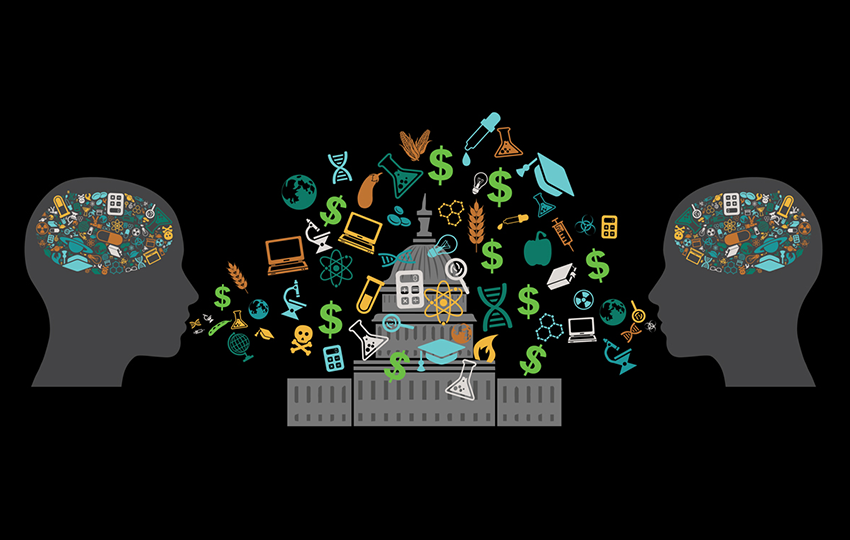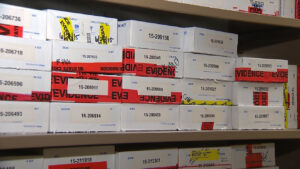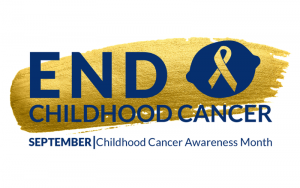Environmental problems, like climate change and biodiversity loss, cannot be solved by scientists or governments alone; they need to learn how to work together and build collaborative, long-lasting relationships. We live in a world where catastrophic problems have become the norm, and the public is more and more desensitized to the environmental issues affecting our planet and communities. As a society, we need to reevaluate our efforts and create better opportunities to restore and preserve at-risk environmental resources. One such collaboration can occur at science-policy interfaces (SPIs) that bridge different information sources and connect them correctly and and concisely. These global communication networks connect researchers with policymakers so that decisions can be based on solid research and current scientific evidence.
In addition to creating a designated line of communication with policymakers, it is important that the conversation includes stakeholders, due to the role that they play in influencing an organization’s success through support and resources. In an attempt to map institutional collaboration across global environmental SPIs, a recent study attempted to address benefits of SPI applications, structural factors hindering collaboration, the creation of a conceptual framework through a co-production model, and many other moving parts that go into effective science communication. A co-production model has different applications and definitions but the main focus is to a build process that brings together diverse groups to iteratively create new knowledge and practices 1. By mapping SPIs across different global organizations, audiences can visualize vital interconnections and discover the importance of a centralized framework that is well-positioned to access information, share knowledge, and build partnerships. A benefit of implementing institutional collaboration is better technical and administrative support that saves money and resources by avoiding duplication of efforts across different organizations 2. Other visual representations for c0-production models can include the one presented by the University of Maine through the Mitchell Center for Sustainability Solutions which examined the critical role universities can play in addressing complex sustainable challenges. The framework displayed in Figure 1, identifies key strategies to enhance universities’ capacity to contribute for real world problem-solving by incorporating collaborative networks and organizing innovative adaptabilities 3. This co-production model can be applied to any university seeking to maximize communication efforts to achieve solutions in any aspect of their institution; whether that may be academic, environmental, or social.
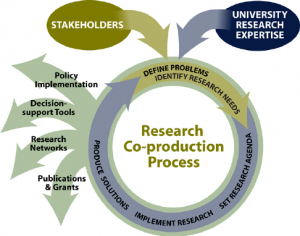
In today’s political climate, now more than ever, we need a streamlined process that guides and informs the necessary groups of the best ways to address environmental problems. But how can environmental impact be measured and communicated to a wider audience through models, theoretical emphasis, or other complex mediums used by the scientific community? There are so many different approaches that can be taken, and it is important to explore various options for students, academics, policymakers, stakeholders, and the general public alike to understand what is out there and how we can do better to become involved. The challenges and opportunities of bridging the gap between research and practice is illustrated through a structured model that aligns research efforts with tangible deliverables. The 4D (Design, Deliver, Disseminate, and Demonstrate) model is illustrated in Figure 2 (modified from (Dwivedi et al. 2024) 5. This model is intended to promote more engagement among academics, industry, policymakers, and society to shift the focus to real-world outcomes. Within this model, researchers are encouraged to pivot towards more inclusive and accessible communication by considering the application of their work in ways that will produce a consistent coordinated relationship among academics, stakeholders, and government officials.

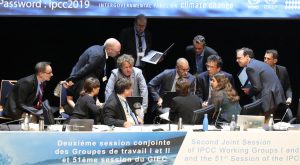
Practice may ‘make perfect’, and while the goal isn’t necessarily perfection, the intention is to get the public emotionally and morally involved in supporting environmentally progressive movements. However, it is important to recognize that increased knowledge doesn’t necessarily translate into a change in public attitude or governmental policy support, which is why values are required to productively channel knowledge towards increased support 12. With this in mind, the long process of understanding how to successfully apply science communication starts with the values that the public upholds in relation to the environment and science as a whole. For individuals that feel they have no stake in protecting the environment around their home and beyond, the disconnect between science and communication can be greater. We cannot wait for environmental issues to affect us personally, however, because then it will be too late. This proactive perspective can be applied for all types of world issues, wherein we see that coming together as one human society, proves to be more effective in solving issues. The conversation should not be whether we should care about the problems plaguing our environment, but how we can inform ourselves to do something about it. This time of uncertainty for the future of science and environmental protections is when science-policy partnerships are at their most paramount importance because by having individuals of every kind of group/organization involved in the conversations, loop can we stop going backwards and attempt to build a world that isn’t so polarized and insensitive towards dangerous problems.
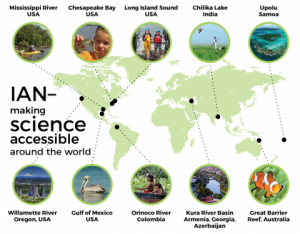
Where would St. Mary’s University like to stand in the history of universities that banded together to leave this world better than we found it? When this institution made a commitment in 2021 to the principles of Pope Francis’s encyclical Laudato Si’ an important step was taken to uphold the practice of bringing together faculty, staff, administrators, and students to work towards care for our common home 15. Established by the Vatican’s Dicastery for Promoting Integral Human Development, the Laudato Si’ Action Platform provides tools and guidance for the journey towards total sustainability in the spirit of integral ecology for a university campus. This encyclical letter is just a different type of application of science-communication, and similar to SPIs, it encompasses all types of communities to understand and apply solutions to an environmental problem. Connecting different channels of information more effectively could make global responses to environmental issues stronger and more coordinated, reminding the public that solving sustainability challenges isn’t just about good science, it’s also about building trust and working together across borders.
Featured Image 16
- Jewell M. 2024 Aug 19. SE CASC Glossary: What is Coproduction? | SECASC. https://secasc.ncsu.edu/2024/08/19/what-is-coproduction/. ↵
- Velander S. 2025. From silos to synergy: Mapping institutional collaboration across global environmental science–policy interfaces. Environmental Science & Policy. 170:104126. doi:https://doi.org/10.1016/j.envsci.2025.104126. ↵
- Hart DD, Bell KP, Lindenfeld LA, Jain S, Johnson TR, Ranco D, McGill B. 2015. Strengthening the role of universities in addressing sustainability challenges: the Mitchell Center for Sustainability Solutions as an institutional experiment. As students of Ecology and Society. 20(2). doi:https://doi.org/10.5751/es-07283-200204. ↵
- Hart DD, Bell KP, Lindenfeld LA, Jain S, Johnson TR, Ranco D, McGill B. 2015. Strengthening the role of universities in addressing sustainability challenges: the Mitchell Center for Sustainability Solutions as an institutional experiment. As students of Ecology and Society. 20(2). doi:https://doi.org/10.5751/es-07283-200204. ↵
- Dwivedi YK, Jeyaraj A, Hughes L, Davies GH, Ahuja M, Albashrawi MA, Al-Busaidi AS, Al-Sharhan S, Al-Sulaiti KI, Altinay L, et al. 2024. “Real impact”: Challenges and opportunities in bridging the gap between research and practice – Making a difference in industry, policy, and society. International Journal of Information Management. 78:102750. doi:10.1016/j.ijinfomgt.2023.102750 ↵
- Dwivedi YK, Jeyaraj A, Hughes L, Davies GH, Ahuja M, Albashrawi MA, Al-Busaidi AS, Al-Sharhan S, Al-Sulaiti KI, Altinay L, et al. 2024. “Real impact”: Challenges and opportunities in bridging the gap between research and practice – Making a difference in industry, policy, and society. International Journal of Information Management. 78:102750. doi:10.1016/j.ijinfomgt.2023.102750. ↵
- Schiffman R. 2022 Apr 28. For Gen Z, Climate Change Is a Heavy Emotional Burden. Yale E360. https://e360.yale.edu/features/for-gen-z-climate-change-is-a-heavy-emotional-burden. ↵
- Di Liberto T. 2024 Jan 9. What’s in a number? The meaning of the 1.5-C climate threshold. wwwclimategov. https://www.climate.gov/news-features/features/whats-number-meaning-15-c-climate-threshold. ↵
- Kohler P. 2022 Jan 24. Science-Policy Interfaces: From Warnings to Solutions. International Institute for Sustainable Development. https://www.iisd.org/articles/science-policy-interfaces. ↵
- Science-Policy Interfaces: From Warnings to Solutions | International Institute for Sustainable Development. https://www.iisd.org/articles/science-policy-interfaces. ↵
- Treadwell S. 2021 Sep 6. A History of Science Communication. Blue Marble Space Institute of Science. https://bmsis.org/a-history-of-science-communication/. ↵
- Simon A, Volmert A, Bunten A, Kendall-Taylor N. 2014. The Value of Explanation: Using Values and Causal Explanations to Reframe Climate and Ocean Change A FRAMEWORKS RESEARCH REPORT. https://www.frameworksinstitute.org/app/uploads/2020/03/occ_values.pdf. ↵
- Science communication services | Work with Us | Integration and Application Network. https://ian.umces.edu/work-with-us/science-communication-services/. ↵
- Science communication services | Work with Us | Integration and Application Network. 2025. Umcesedu. https://ian.umces.edu/work-with-us/science-communication-services/. ↵
- Laudato Si’ | St. Mary’s University | San Antonio, Texas. St Mary’s University. https://www.stmarytx.edu/about/laudato-si/. ↵
- Team iED. 2018 Sep 3. Taking stock and re-examining the role of science communication. Institute of Entrepreneurship Development. https://ied.eu/blog/taking-stock-and-re-examining/. ↵
